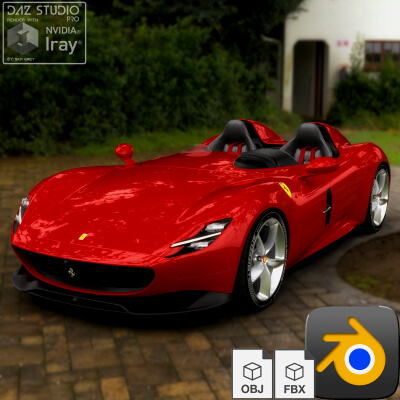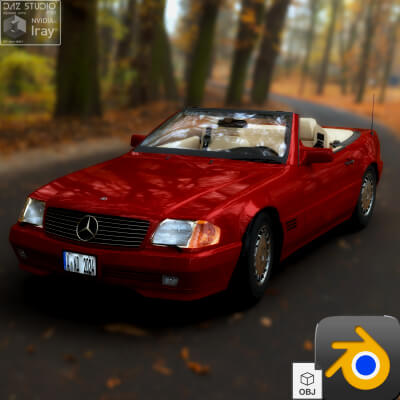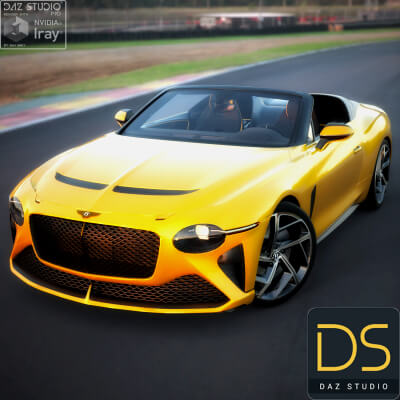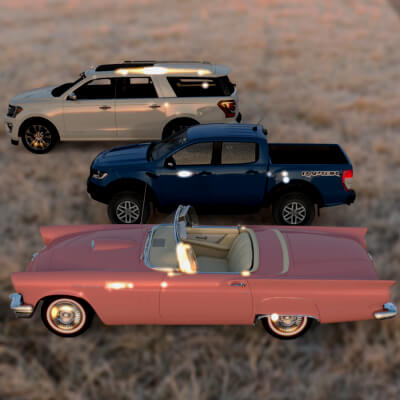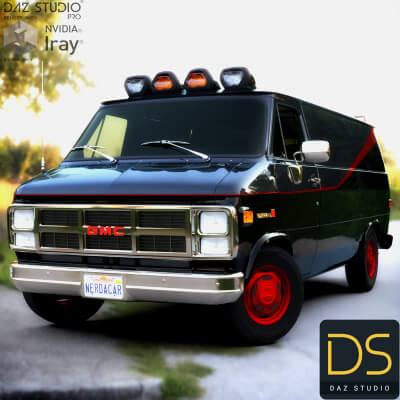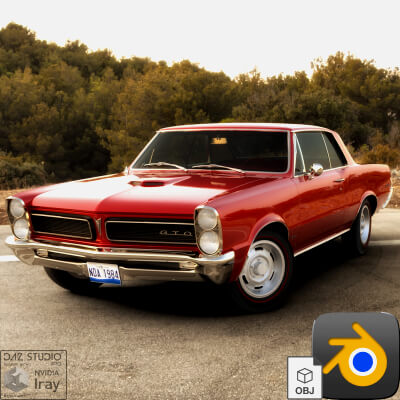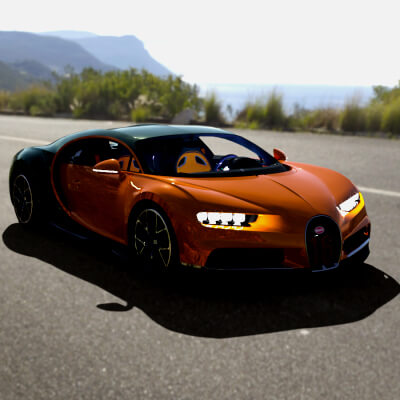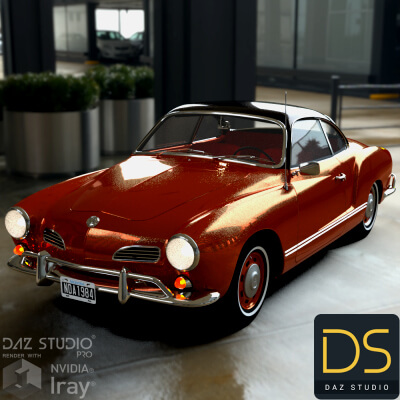! REPORT
Ferrari Monza SP2 2019
3D Render by nerdadantesThe Ferrari SP2, together with the SP1, are the forerunners in a new concept, known as ‘Icona’ (Icon), that taps into a leitmotif of the most evocative cars in the company’s history to create a new segment of special limited series cars for clients and collectors. The intention is to use a modern aesthetic to reinterpret a timeless style, with technologically advanced components and the highest performance possible through continuous innovation.
Just like on racing cars, extensive use of carbon-fibre has been made throughout the construction of the Monza SP2 to make them light and responsive and to enhance their sporty, aggressive visual appeal.
The exterior is completed by wonderfully sculptural 21” five-spoke wheels that were designed specifically to compliment the minimalist lines of the two cars.
A new tail light concept: the side lights and brake lights have been redesigned as a single unbroken line of light, seamlessly integrated into the slender gap between the two shells. This turns the tail light assembly into a theoretical line that traverses the wings and circles the bonnet, giving the impression that the upper shell is literally suspended above the rest of the volume.
A car that seems sculpted by the wind. It is the purity of the styling elements that impresses – an aesthetic that is futuristic but, at the same time, a respectful yet un-nostalgic homage to the past.
The engine in the Monza SP2 is derived directly from that of the 812 Superfast, with optimised fluid-dynamics in the intake ducts to deliver even higher performance.
The Virtual Wind Shield is essentially an aerodynamic passage underneath the driver’s side aero screen, where the upper part is shaped as an aerofoil. Part of the air flowing over the bonnet enters the air intake under the aero screen, where it is accelerated and deflected vertically ahead of the instrument panel. This generates what is known as a highly energised upwash that deflects the flow over the driver’s head creating a low-speed bubble around the cockpit.
The concept was first developed virtually using in-depth CFD modelling and then physically in the wind tunnel. A full-scale mock-up was built specifically for the Wind Tunnel in which our test-drivers alternated with dummies fitted out with pressure sensors (rake and keel probes). With no windscreen whatsoever, the air flowing over the bonnet would hit the driver’s face. The aim with adopting the Virtual Wind Shield was to minimise the negative effect of the air flow without compromising the exhilarating sense of speed and contact with the road that only a car of this kind can deliver.
The Virtual Wind Shield was patented for this car in response to the need to allow the driver enjoy it at high speeds. Although it remains below the driver’s cone of vision, it delivers maximum driving comfort for a barchetta.
The result is that the model is perfectly balanced with no roll whatsoever for almost unimaginably pure, uncompromising sports-car handling. Because there are no windscreen pillars, the driver’s view is completely unhindered and this enables them to attack corners with a freedom only experience with a Formula 1 car. The driver can thus enjoy involving and rewarding sports car responses over twisty routes: the car is always gratifying but never difficult to control.
The Ferrari Monza SP1 and SP2 are the forerunners in a new concept, known as 'Icona' (Icon), that taps into a leitmotif of the most evocative cars in the company's history to create a new segment of special limited series cars for clients and collectors. The intention is to use a modern aesthetic to reinterpret a timeless style, with technologically advanced components and the highest performance possible through continuous innovation.
The Ferrari Monza SP1 and SP2 are inspired by barchettas of the 1950s which were driven to victory in international motor sport not just by official works team drivers from the Scuderia, but also by a legion of gentlemen drivers who, in those years, frequently found themselves wheel to wheel with legendary professional drivers of the era.
The first ever Ferrari to be referred to as a barchetta was the open-top version of the 1948 166 MM. The name was coined by Giovanni Agnelli who, upon seeing the car for the first time at the Turin Motor Show that year, commented that it was less like a car and more like a barchetta, referring to the Italian for a small speed boat. The Touring-bodied 166 MM barchetta wrote Ferrari's name firmly in the history books, winning first the Mille Miglia and then the grueling 24 Hours of Le Mans in 1949. This model was followed by other extraordinarily successful Ferrari Sports cars, such as the 750 Monza and 860 Monza which were inspiration for the name of the new models.
------
Barchettas were similar to spiders in form (two seaters), but had no roof or weather equipment. Instead of a full windscreen, they were equipped with just a small screen (single or wrap-around) and a removable tonneau cover over the passenger side. The Monza SP1 and SP2 are similar in concept, although the main difference is that they can be ordered either as a single-seater or as a two-seater.
The result is a car that seems sculpted by the wind. It is the purity of the styling elements that impresses - an aesthetic that is futuristic but, at the same time, a respectful yet un-nostalgic homage to the past.
Enzo Ferrari used to say that "If there is such a thing as a soul, engines have one". This model's soul is, as is true of all Ferraris, in its engine. The Ferrari Monza SP1 and SP2 are equipped with the most powerful naturally-aspirated V12 ever produced by Ferrari. Thanks to specific areas of development, the power of the 812 Superfast's 6.5 litre has been increased by 10 cv to 810 cv at 8500 rpm with a slight increase in torque to 719 Nm at 7000 rpm.
Just like on racing cars, extensive use of carbon-fibre has been made throughout the construction of the Monza SP1 and SP2 to make them light and responsive and to enhance their sporty, aggressive visual appeal.
As these are completely en plein air sports cars with no windscreen, one of the biggest challenges was to create an aerodynamic solution that would ensure the driver enjoys the performance of the cars without being affected by issues caused by the barchetta configuration. The result was the patented "Virtual Wind Shield" which is integrated into the fairing ahead of the instrument panel and the steering wheel, providing exceptional driving comfort.
Exterior
Racing has always greatly influenced Ferrari design language and the Monza SP1 and SP2 are linked to the marque's glorious past by an invisible bond. Their design, in fact, embodies the elegance, performance and innovation that are such an intrinsic part of Ferrari's past and present.
From the point of view of pure creativity, the seductive images of 1950s Ferrari barchettas, that evoke in so many ways the atmosphere of the races of the day, were an invaluable source of inspiration.
The Ferrari Styling Centre's designers gave the barchetta concept an absolutely modern connotation thanks a new and highly personal take on the theme. But there are no nostalgic references, no elements borrowed directly from the past. The Monza SP1 and SP2 were designed like a modern single-seater for a new generation of gentlemen drivers.
The Ferrari Monza SP1 and SP2 design language is clearly visible in its elegant forms and the wing-profile volume of the all-carbon-fibre bodyshell, in its proportions, refined details, spare lines. The extreme forms of the more extreme high-performance Ferraris have been avoided. In this instance, the Ferrari Styling Centre's designers strove to retain a form so pure it could be described in a single pencil stroke.
The cars' sleek, minimalist silhouette seems almost to float on the delicate yet robust sculptural rear diffuser that wraps around the tail like an embrace, visually leading to the slender yet precise line of the flanks and then to the base of the front bumper. That effect is further amplified by the colour contrast between the black carbon-fibre of the sills and the rest of bodywork, the extreme lightness of which is underscored by the two elegant shells comprising it.
The Monza SP1 and SP2's postmodern aesthetic is also clear at the rear which has the soft, sinuous look typical of the Ferraris of the 1950s, a compact tail and full, muscular forms.
The pivotal idea was to break up the volume into two shells: an upper cover and a lower hull. These two elements create a dialogue yet the upper shell seems almost to float, an effect obtained by a an uninterrupted strip inside a groove that circles the cockpit and ends above the tail. This solution creates the impression that the two volumes are separate.
This is a theme which appeared on Ferraris of various different decades, including those from the 1980s, but in this instance also became a leitmotif that brings structure to the form. It allows the rear of the car to be both solid and light at once.
The interesting thing in this case is that it allowed a new tail light concept to be introduced: the side lights and brake lights have been redesigned as a single unbroken line of light, seamlessly integrated into the slender gap between the two shells. This turns the tail light assembly into a theoretical line that traverses the wings and circles the bonnet, giving the impression that the upper shell is literally suspended above the rest of the volume. This is a very contemporary take on the rear-end treatment of the 750 Monza and 375 MM which provided the inspiration.
This iconic theme of the "line of light" resurfaces in the headlights too and along the side air vents creating a signature "naked" effect.
The cars' flanks are absolutely clean, taut and pure, interrupted only by the visually striking, scooped side air vent, in homage to the barchettas of old.
The front of the car is sober and spare: a single smooth, pared-back surface seamlessly integrating bonnet and sinuous wings. Its forms are a nod to the signature styling elements from Ferrari tradition. It is a fuselage extending back from the fine mesh radiator grille which itself is underscored by the three-dimensional structure beneath it with its two prominent air intakes. The entire front of the car looks as if it is draped, cloaked and enveloped by the surface treatment.
Particular attention was lavished on the design of the compact doors which open upwards. This involved re-engineering the 812 Superfast's entire door assembly but the results are spectacular. Equally important is the all-carbon-fibre one-piece bonnet-wing assembly which is hinged at the front to showcase the imposing V12 engine once open.
The exterior is completed by wonderfully sculptural 21" five-spoke wheels that were designed specifically to compliment the minimalist lines of the two cars.
Just like on racing cars, extensive use of carbon-fibre has been made throughout the construction of the Monza SP2 to make them light and responsive and to enhance their sporty, aggressive visual appeal.
The exterior is completed by wonderfully sculptural 21” five-spoke wheels that were designed specifically to compliment the minimalist lines of the two cars.
A new tail light concept: the side lights and brake lights have been redesigned as a single unbroken line of light, seamlessly integrated into the slender gap between the two shells. This turns the tail light assembly into a theoretical line that traverses the wings and circles the bonnet, giving the impression that the upper shell is literally suspended above the rest of the volume.
A car that seems sculpted by the wind. It is the purity of the styling elements that impresses – an aesthetic that is futuristic but, at the same time, a respectful yet un-nostalgic homage to the past.
The engine in the Monza SP2 is derived directly from that of the 812 Superfast, with optimised fluid-dynamics in the intake ducts to deliver even higher performance.
The Virtual Wind Shield is essentially an aerodynamic passage underneath the driver’s side aero screen, where the upper part is shaped as an aerofoil. Part of the air flowing over the bonnet enters the air intake under the aero screen, where it is accelerated and deflected vertically ahead of the instrument panel. This generates what is known as a highly energised upwash that deflects the flow over the driver’s head creating a low-speed bubble around the cockpit.
The concept was first developed virtually using in-depth CFD modelling and then physically in the wind tunnel. A full-scale mock-up was built specifically for the Wind Tunnel in which our test-drivers alternated with dummies fitted out with pressure sensors (rake and keel probes). With no windscreen whatsoever, the air flowing over the bonnet would hit the driver’s face. The aim with adopting the Virtual Wind Shield was to minimise the negative effect of the air flow without compromising the exhilarating sense of speed and contact with the road that only a car of this kind can deliver.
The Virtual Wind Shield was patented for this car in response to the need to allow the driver enjoy it at high speeds. Although it remains below the driver’s cone of vision, it delivers maximum driving comfort for a barchetta.
The result is that the model is perfectly balanced with no roll whatsoever for almost unimaginably pure, uncompromising sports-car handling. Because there are no windscreen pillars, the driver’s view is completely unhindered and this enables them to attack corners with a freedom only experience with a Formula 1 car. The driver can thus enjoy involving and rewarding sports car responses over twisty routes: the car is always gratifying but never difficult to control.
The Ferrari Monza SP1 and SP2 are the forerunners in a new concept, known as 'Icona' (Icon), that taps into a leitmotif of the most evocative cars in the company's history to create a new segment of special limited series cars for clients and collectors. The intention is to use a modern aesthetic to reinterpret a timeless style, with technologically advanced components and the highest performance possible through continuous innovation.
The Ferrari Monza SP1 and SP2 are inspired by barchettas of the 1950s which were driven to victory in international motor sport not just by official works team drivers from the Scuderia, but also by a legion of gentlemen drivers who, in those years, frequently found themselves wheel to wheel with legendary professional drivers of the era.
The first ever Ferrari to be referred to as a barchetta was the open-top version of the 1948 166 MM. The name was coined by Giovanni Agnelli who, upon seeing the car for the first time at the Turin Motor Show that year, commented that it was less like a car and more like a barchetta, referring to the Italian for a small speed boat. The Touring-bodied 166 MM barchetta wrote Ferrari's name firmly in the history books, winning first the Mille Miglia and then the grueling 24 Hours of Le Mans in 1949. This model was followed by other extraordinarily successful Ferrari Sports cars, such as the 750 Monza and 860 Monza which were inspiration for the name of the new models.
------
Barchettas were similar to spiders in form (two seaters), but had no roof or weather equipment. Instead of a full windscreen, they were equipped with just a small screen (single or wrap-around) and a removable tonneau cover over the passenger side. The Monza SP1 and SP2 are similar in concept, although the main difference is that they can be ordered either as a single-seater or as a two-seater.
The result is a car that seems sculpted by the wind. It is the purity of the styling elements that impresses - an aesthetic that is futuristic but, at the same time, a respectful yet un-nostalgic homage to the past.
Enzo Ferrari used to say that "If there is such a thing as a soul, engines have one". This model's soul is, as is true of all Ferraris, in its engine. The Ferrari Monza SP1 and SP2 are equipped with the most powerful naturally-aspirated V12 ever produced by Ferrari. Thanks to specific areas of development, the power of the 812 Superfast's 6.5 litre has been increased by 10 cv to 810 cv at 8500 rpm with a slight increase in torque to 719 Nm at 7000 rpm.
Just like on racing cars, extensive use of carbon-fibre has been made throughout the construction of the Monza SP1 and SP2 to make them light and responsive and to enhance their sporty, aggressive visual appeal.
As these are completely en plein air sports cars with no windscreen, one of the biggest challenges was to create an aerodynamic solution that would ensure the driver enjoys the performance of the cars without being affected by issues caused by the barchetta configuration. The result was the patented "Virtual Wind Shield" which is integrated into the fairing ahead of the instrument panel and the steering wheel, providing exceptional driving comfort.
Exterior
Racing has always greatly influenced Ferrari design language and the Monza SP1 and SP2 are linked to the marque's glorious past by an invisible bond. Their design, in fact, embodies the elegance, performance and innovation that are such an intrinsic part of Ferrari's past and present.
From the point of view of pure creativity, the seductive images of 1950s Ferrari barchettas, that evoke in so many ways the atmosphere of the races of the day, were an invaluable source of inspiration.
The Ferrari Styling Centre's designers gave the barchetta concept an absolutely modern connotation thanks a new and highly personal take on the theme. But there are no nostalgic references, no elements borrowed directly from the past. The Monza SP1 and SP2 were designed like a modern single-seater for a new generation of gentlemen drivers.
The Ferrari Monza SP1 and SP2 design language is clearly visible in its elegant forms and the wing-profile volume of the all-carbon-fibre bodyshell, in its proportions, refined details, spare lines. The extreme forms of the more extreme high-performance Ferraris have been avoided. In this instance, the Ferrari Styling Centre's designers strove to retain a form so pure it could be described in a single pencil stroke.
The cars' sleek, minimalist silhouette seems almost to float on the delicate yet robust sculptural rear diffuser that wraps around the tail like an embrace, visually leading to the slender yet precise line of the flanks and then to the base of the front bumper. That effect is further amplified by the colour contrast between the black carbon-fibre of the sills and the rest of bodywork, the extreme lightness of which is underscored by the two elegant shells comprising it.
The Monza SP1 and SP2's postmodern aesthetic is also clear at the rear which has the soft, sinuous look typical of the Ferraris of the 1950s, a compact tail and full, muscular forms.
The pivotal idea was to break up the volume into two shells: an upper cover and a lower hull. These two elements create a dialogue yet the upper shell seems almost to float, an effect obtained by a an uninterrupted strip inside a groove that circles the cockpit and ends above the tail. This solution creates the impression that the two volumes are separate.
This is a theme which appeared on Ferraris of various different decades, including those from the 1980s, but in this instance also became a leitmotif that brings structure to the form. It allows the rear of the car to be both solid and light at once.
The interesting thing in this case is that it allowed a new tail light concept to be introduced: the side lights and brake lights have been redesigned as a single unbroken line of light, seamlessly integrated into the slender gap between the two shells. This turns the tail light assembly into a theoretical line that traverses the wings and circles the bonnet, giving the impression that the upper shell is literally suspended above the rest of the volume. This is a very contemporary take on the rear-end treatment of the 750 Monza and 375 MM which provided the inspiration.
This iconic theme of the "line of light" resurfaces in the headlights too and along the side air vents creating a signature "naked" effect.
The cars' flanks are absolutely clean, taut and pure, interrupted only by the visually striking, scooped side air vent, in homage to the barchettas of old.
The front of the car is sober and spare: a single smooth, pared-back surface seamlessly integrating bonnet and sinuous wings. Its forms are a nod to the signature styling elements from Ferrari tradition. It is a fuselage extending back from the fine mesh radiator grille which itself is underscored by the three-dimensional structure beneath it with its two prominent air intakes. The entire front of the car looks as if it is draped, cloaked and enveloped by the surface treatment.
Particular attention was lavished on the design of the compact doors which open upwards. This involved re-engineering the 812 Superfast's entire door assembly but the results are spectacular. Equally important is the all-carbon-fibre one-piece bonnet-wing assembly which is hinged at the front to showcase the imposing V12 engine once open.
The exterior is completed by wonderfully sculptural 21" five-spoke wheels that were designed specifically to compliment the minimalist lines of the two cars.
































